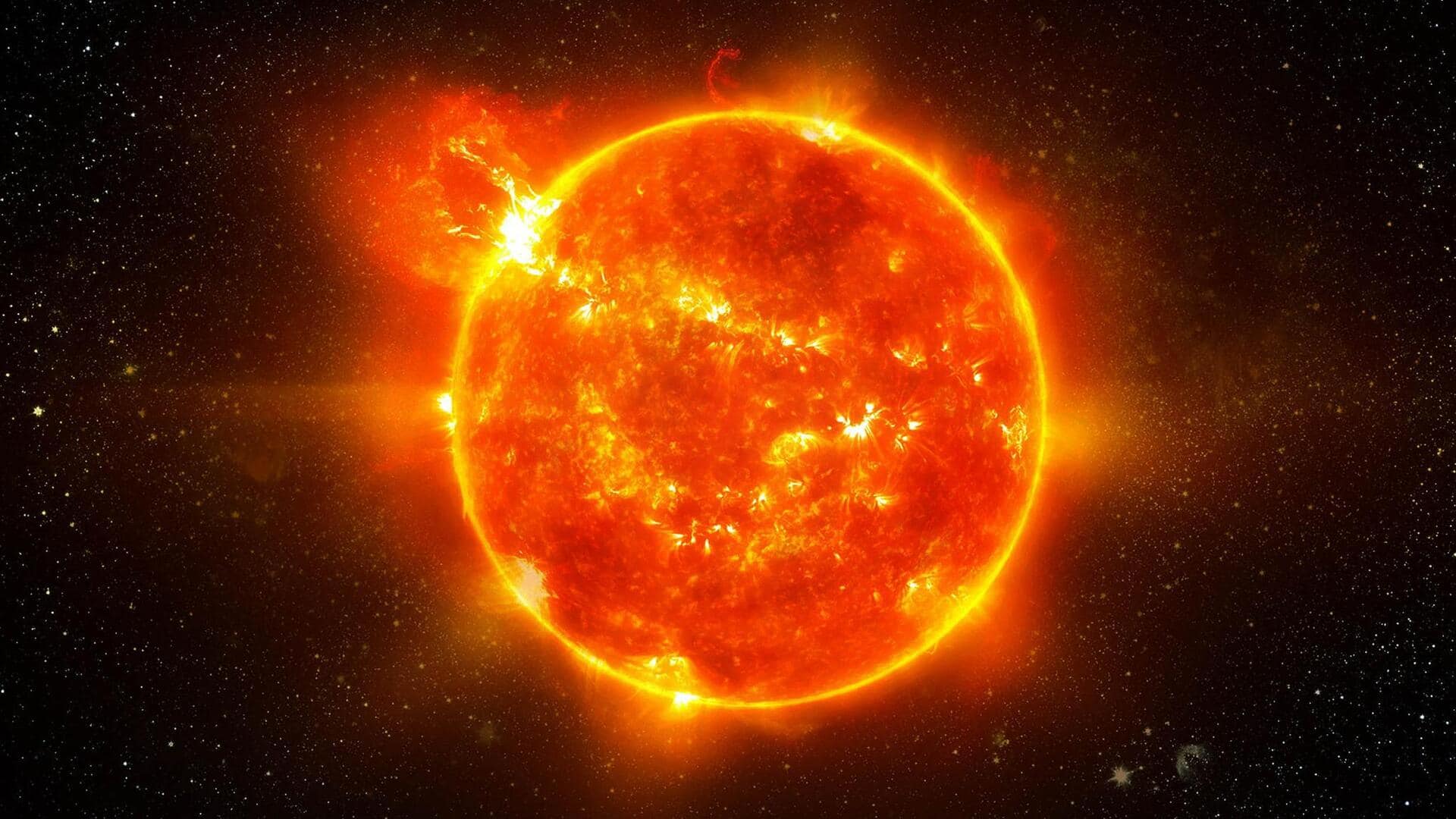
Sun officially enters its 'solar maximum period': What it means
What's the story
The sun has officially entered its "solar maximum period," a phase in the 11-year solar cycle characterized by increased sunspots and solar activity. Jamie Favors, head of NASA's Space Weather Program, said this heightened activity could affect daily life on Earth. "This increase in activity provides an exciting opportunity to learn about our closest star — but also causes real effects on Earth and throughout our solar system," Favors explained.
Solar cycle
Understanding the solar maximum
The solar maximum is a phase of the sun's 11-year cycle, when its magnetic activity varies. The cycle culminates in a solar maximum, occasionally flipping Earth's magnetic North and South poles every decade. The sun's surface grows more active with more sunspots, solar flares, and coronal mass ejections (CMEs) during this time. These sunspots appear as dark patches on the solar surface and are cooler than their surroundings.
Geomagnetic storms
Solar maximum's impact on Earth
Solar flares and CMEs from the sun can trigger solar storms that bombard Earth with charged particles. These particles interact with Earth's magnetic field, triggering geomagnetic storms that can disrupt satellite communications, GPS/radio signals, and even power grids. Elsayed Talaat, director of space weather operations at the SWPC, clarified that while we've entered the solar maximum period, "the month that solar activity peaks on the Sun will not be identified for months or years."
Solar storms
Recent months have seen increased solar activity
In recent months, we have seen increased aurora visibility and impacts on satellites due to heightened solar activity. In May, a series of solar flares and CMEs triggered strongest geomagnetic storm at Earth in two decades. As the solar maximum continues, scientists expect more solar and geomagnetic storms, possibly resulting in more frequent aurora sightings and technological disruptions. NASA and National Oceanic and Atmospheric Administration (NOAA) are improving their space weather research and prediction capabilities to better understand these effects.